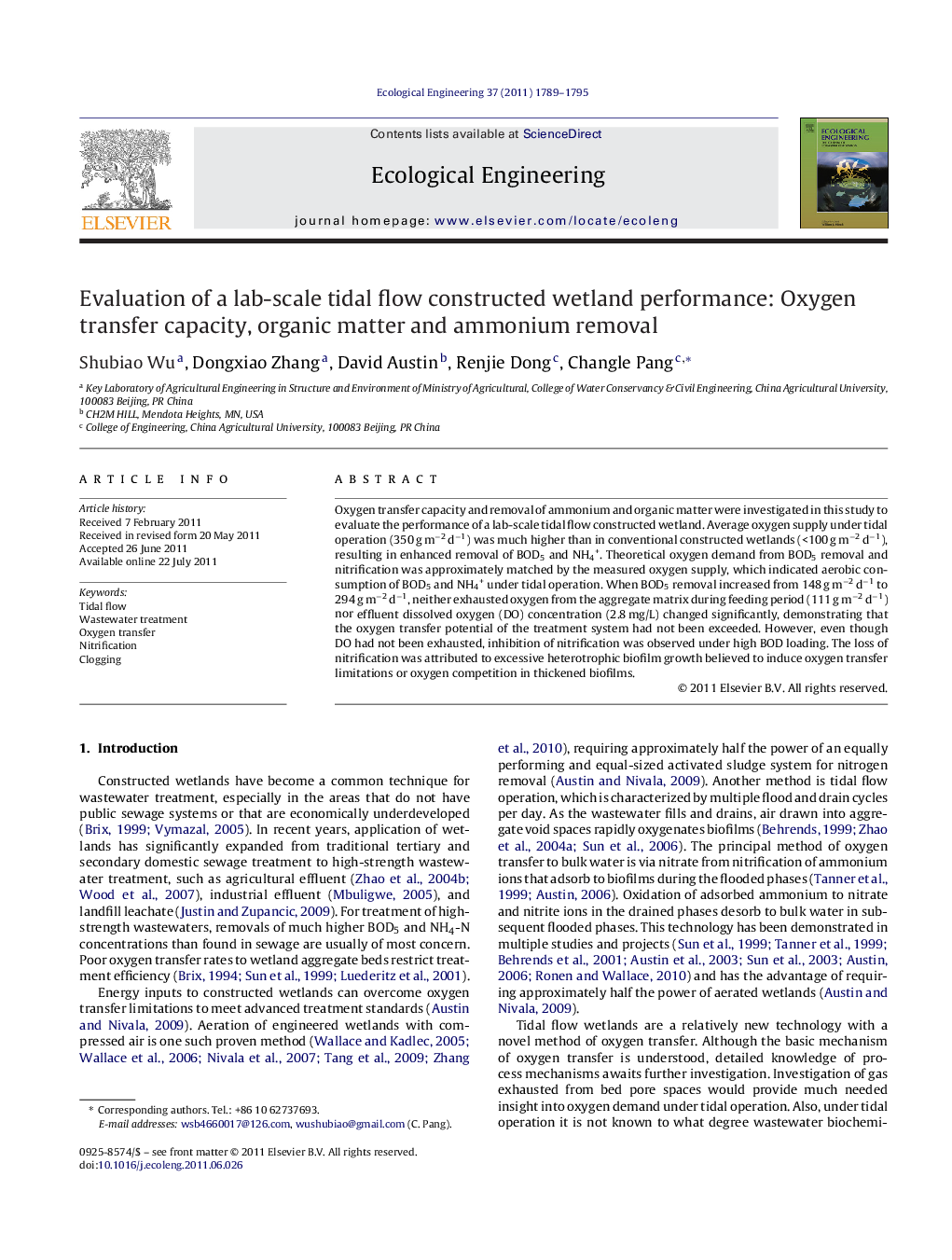| Article ID | Journal | Published Year | Pages | File Type |
|---|---|---|---|---|
| 4390130 | Ecological Engineering | 2011 | 7 Pages |
Oxygen transfer capacity and removal of ammonium and organic matter were investigated in this study to evaluate the performance of a lab-scale tidal flow constructed wetland. Average oxygen supply under tidal operation (350 g m−2 d−1) was much higher than in conventional constructed wetlands (<100 g m−2 d−1), resulting in enhanced removal of BOD5 and NH4+. Theoretical oxygen demand from BOD5 removal and nitrification was approximately matched by the measured oxygen supply, which indicated aerobic consumption of BOD5 and NH4+ under tidal operation. When BOD5 removal increased from 148 g m−2 d−1 to 294 g m−2 d−1, neither exhausted oxygen from the aggregate matrix during feeding period (111 g m−2 d−1) nor effluent dissolved oxygen (DO) concentration (2.8 mg/L) changed significantly, demonstrating that the oxygen transfer potential of the treatment system had not been exceeded. However, even though DO had not been exhausted, inhibition of nitrification was observed under high BOD loading. The loss of nitrification was attributed to excessive heterotrophic biofilm growth believed to induce oxygen transfer limitations or oxygen competition in thickened biofilms.
